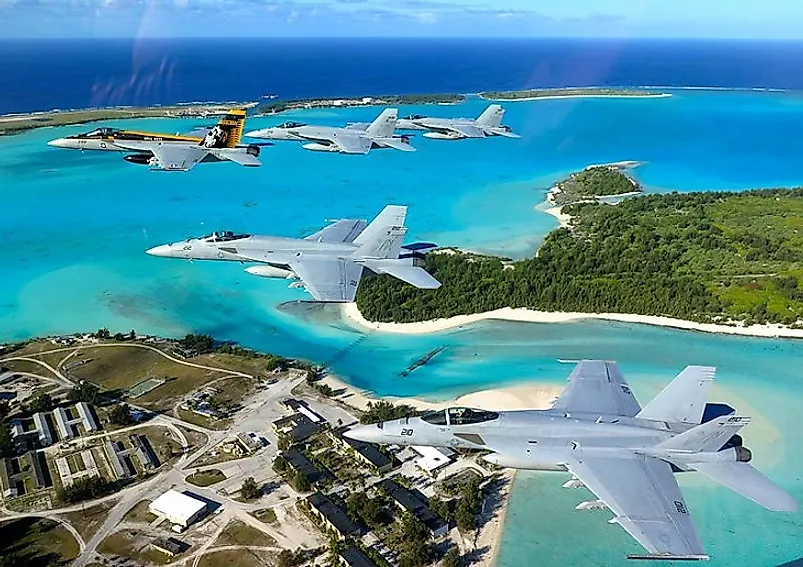Where Is Wake Island, And Who Owns It?

5. Description
This unincorporated US territory is a strategically important island atoll in the Western Pacific Ocean that was claimed by the United States on January 17th, 1899. The island is unintegrated and set apart from other islands in the Pacific by a distance of 592 miles from its nearest neighbor, the Utirik Atoll, which is part of the Marshall Islands. Wake Island is actually composed of three islets. Namely, these are Wake, Wilkes, and Peale. These three islets are positioned around a lagoon. The atoll has a less than three square mile land area, and its location is in the central Pacific. The island was named after Captain Samuel Wake of the British Merchantmen who visited the island in 1796.
4. Historical Role
Wake Island has been discovered and re-discovered several times since its first landfall in 1568 by the Spanish explorer Alvaro de Mendana de Neyra. Wake Island was situated on the galleon route between Acapulco, Mexico and Manila, the Philippines, so it was not possible to miss it. The Bremen ship Libelle was run aground on the island's eastern reef on the night of March 4th, 1866. The ship was sailing from San Francisco to Hong Kong when it was shipwrecked in the atoll. From that day on, many ships would dock close to the atoll and make recovery efforts of the valuable cargo of the Libelle. Some were able to recover gems and coins, but another one or two became shipwrecked themselves and their crew members perished.
3. Modern Significance
In 1898, the United States annexed Hawaii, Guam, and the Philippines as either potential states or territories. The United States was looking for a Pacific refueling stop for its Navy ships, and decided that Wale Island was perfectly located for that purpose. President William Mckinley ordered US Navy Commander Edward Taussig on January 17th, 1899 to claim the island for the United States. Some incidents followed after an American Navy ship captained by Alfred Croskey investigated the island when they saw some Japanese occupying the island. The Japanese government stated that it was not making any claims to the island, and that the men were on the island looking for guano and fish. This was followed by incidents of Japanese poachers hunting seabirds for their feathers for the hat and pillow industry back in Japan.
2. Habitat and Biodiversity
Habitats on Wake Island and its three islets are limited to shrubs, typical tropical island topography, and the inner reef lagoon, as well as the surrounding coral reef. The island and islets are inhabited by such birds as sanderlings, sooty terns, white-tailed tropicbirds, boobies, frigatebirds, shearwaters, turnstones, curlews, tattlers, plovers, albatross, yellowlegs, and noddies. Green sea Turtles and skinks can also be found in the islets. There is also a rare type of grass, lepturus gasparricensis., that is endemic to the island. Reef fish species include the bumphead parrotfish, Napoleon wrasse, and groupers. Other marine fish also occupy a niche in the coral reef. This coral atoll has about 52 coral species in and around the lagoon.
1. Environmental Threats and Territorial Disputes
The United States has not incorporated and organized Wake Island, and as such many governmental services are lacking. Conservation efforts by wildlife personnel is virtually nil, and the parrotfish and wrasse populations have declined considerably here, both of which have been listed as "vulnerable" species. Once a thriving population, the Wake Rails that were once found living on the island is now extinct due to hunting for food by the Japanese during World War II. The island was the scene of a battle between Japanese soldiers and American soldiers in the Second World War after the Japanese made two attacks on the island. On December 23rd, 1941, they occupied the island and held US soldiers prisoners until their surrender in 1945 to the US forces. Today, the Marshall Islands still has an ongoing disputed claim to Wake Island.











